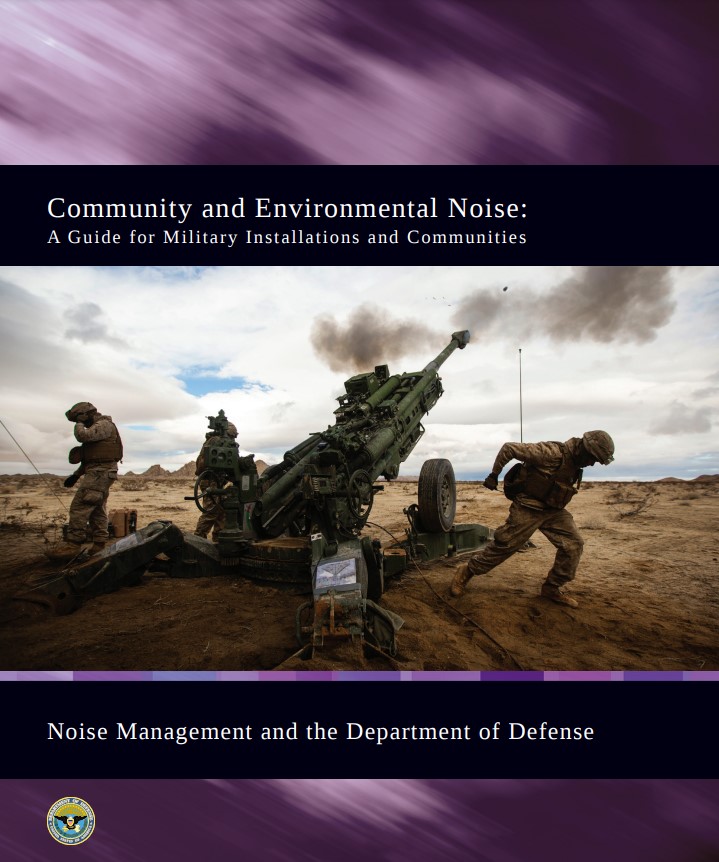Introduction
Department of Defense (DoD) policy is to reduce adverse effects from noise associated with military testing and training operations. DoD implements this policy by promoting noise education and training for DoD and the public; leveraging resources to ensure coordination among the DoD and other federal agencies; and promoting outreach to those affected by noise from military activities. The DoD Noise Program and the Defense Noise Working Group (DNWG) are the mechanisms for implementing DoD’s noise policy in a manner that is consistent with maintaining military readiness and preserving the ability to conduct critical testing and training requirements. DoD established its Noise Program and the DNWG to address the far-reaching effects of noise generated by military activities, understanding that proactive communication and collaborative land use planning can reduce or prevent impact on the military’s ability to carry out its testing and training missions.
Noise generated from military operations and long-term noise exposure on surrounding communities are the most persistent and costly encroachment challenges for DoD. The presence of noise can extend far beyond the fenceline and tends to be more apparent to the public than other visual or environmental factors. As a result, noise generates many complaints from communities and is often the most prominent discussion point and decision-making factor in land use planning surrounding military installations. Noise-related factors are also the most common issue at installations and ranges that request funding through the DoD’s Readiness and Environmental Protection Integration (REPI) Program to protect land in the vicinity of installations and ranges from further incompatible development.
Representatives from the DoD Noise Program, DNWG, and the Military Services have developed this primer to communicate with military installations, neighboring communities, and partnering organizations about military noise and the basic noise management activities that DoD uses to engage and inform the public. Through effective communication, education, and cooperation, DoD and the Military Services will continue to manage noise exposure while protecting its mission.

